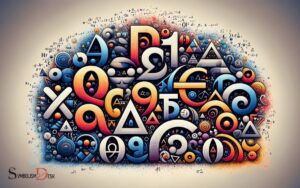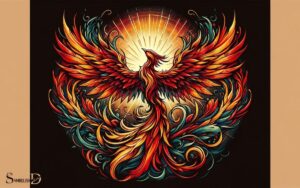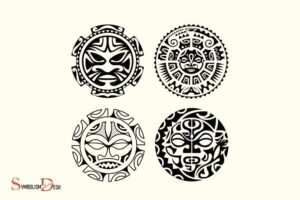Christmas Symbols And What They Mean? Cultural Significance!
Christmas symbols and their meanings are deeply rooted in tradition and cultural significance.
Some of the most recognizable Christmas symbols include the Christmas tree, Santa Claus, Christmas star, Christmas bells, and the Christmas wreath.
Each of these symbols carries a unique message and significance related to the festive season.
The Christmas tree symbolizes eternal life. Its evergreen nature is a reminder of everlasting life and God’s love. Santa Claus, based on the charitable Saint Nicholas, represents the spirit of giving and kindness.
The star symbolizes the Star of Bethlehem, which guided the Wise Men to the baby Jesus.
Christmas bells are used to announce the arrival of the season and to proclaim the birth of Jesus, while the Christmas wreath symbolizes the eternal nature of God’s love, being round with no end or beginning.
Understanding the meaning of Christmas symbols enhances the significance of the holiday season.
Beyond the lights, gifts, and merrymaking, these symbols root us to the essence of Christmas – faith, hope, love, and the spirit of giving.
By knowing these meanings, we deepen our appreciation for the holiday and its central message.
13 Christmas Symbols and Their Meanings
| Symbol | Meaning |
|---|---|
| Christmas Tree | The evergreen tree represents eternal life and the cycle of renewal. It’s adorned with lights and decorations to symbolize the light of Christ and the joy of the season. |
| Star | The star atop the Christmas tree symbolizes the Star of Bethlehem that guided the Wise Men to the birthplace of Jesus. It represents divine guidance and hope. |
| Candles | Candles represent the light of Christ coming into the world. The Advent wreath, with its candles, marks the four weeks leading to Christmas, symbolizing hope, love, joy, and peace. |
| Nativity Scene | The Nativity scene depicts the birth of Jesus in a stable, including Mary, Joseph, the shepherds, Wise Men, and animals. It reflects the humble beginnings of Christ’s life and the significance of His birth. |
| Angels | Angels are messengers of God and play a prominent role in the Christmas story. They heralded Jesus’ birth to the shepherds, symbolizing divine presence, protection, and the announcement of good news. |
| Manger | The manger where Jesus was placed after His birth represents humility and simplicity. It signifies that Christ came to the world without worldly wealth or pomp. |
| Wreath | The Christmas wreath, often made of evergreens, symbolizes eternity and God’s unending love. The circular shape represents God’s eternal nature and the hope of eternal life through Christ. |
| Gifts | The tradition of giving gifts mirrors the gift of Jesus from God to humanity. It symbolizes love, generosity, and sharing joy with others. |
| Holly and Ivy | These evergreens are associated with Christmas due to their vibrant colors during the winter. Holly berries and ivy leaves symbolize Christ’s blood (red) and His eternal life (evergreen). |
| Bells | Bells are rung to announce the joy of Christ’s birth and to call people to worship. They represent celebration, rejoicing, and spreading the good news. |
| Candy Canes | The candy cane’s shape resembles a shepherd’s staff or the letter “J” for Jesus. Its red and white colors symbolize Christ’s sacrifice and purity, respectively. |
| Poinsettia | The poinsettia’s red leaves are associated with Christ’s blood, while its shape is said to resemble the Star of Bethlehem. It symbolizes the festive season and Christ’s birth. |
| Colors: Red and Green | Red symbolizes Christ’s sacrifice and love, while green represents life, renewal, and hope. These colors reflect the spiritual and natural aspects of the season. |
Key Takeaway

Five Facts About: Christmas Symbols and Their Meanings
The History Of Christmas Symbols And Their Significance
Christmas is a time of symbolism, with many different decorations and representations found all around.
These symbols are far from arbitrary, with each having a deep meaning and significance to those who use them.
We explore the history behind these symbols, examining their origins and cultural importance.
The Origin Of The Christmas Tree And Its Importance
The christmas tree is arguably one of the most well-known symbols associated with this holiday.
This iconic decoration is believed to have originated in germany in the 16th century, where it was commonly used to celebrate the eve of adam and eve.
Since then, the tree has become a staple of christmas celebrations around the world, carrying deep cultural significance.
Key points on the history of the christmas tree include:
- Martin luther, a 16th-century german theologian, is credited with adding candles to the tree to represent the stars in the sky.
- In the 1800s, christmas trees became popular in england and america after prince albert, husband to queen victoria, introduced the custom to the royal family.
- Many people believe that the evergreen tree symbolizes the promise of eternal life through christ.
The Evolution Of The Candy Cane And Its Hidden Meaning
The candy cane is a much more recent symbol, originally created in the 17th century by a german choirmaster.
It has since become popular throughout the world, with its bright colours and distinctive shape adorning many holiday decorations.
The symbolism behind the candy cane is deeply rooted in christian tradition, representing the good shepherd’s staff as a reminder of christ’s role as the shepherd of the flock.
Key points on the candy canes evolution include:
- The original candy cane was likely created as a religious aid, used to keep children entertained during long church services.
- The red and white colours of the candy cane are said to represent the blood and purity of christ, respectively.
- The cane’s distinctive hook shape is also thought to represent the crook of a shepherd.
The Symbolism Of The Poinsettia And Its Connection To Christmas
The poinsettia is another popular christmas symbol that originated in mexico, where it is known as “flor de nochebuena,” or “christmas eve flower. ”
This striking red and green plant has come to represent the hope and purity of the holiday season, with a deep cultural significance.
Key points on the symbolism of the poinsettia include:
- The poinsettia is named after joel poinsett, an american ambassador to mexico and an amateur botanist who brought the plant to the united states in the 1820s.
- The poinsettia is traditionally associated with the nativity story, where it is said to have bloomed miraculously beside the manger in which jesus was born.
- In mexican legend, the poinsettia is said to symbolize the star of bethlehem, which guided the three wise men to the christ child.
Christmas symbols hold a deep meaning for those who celebrate the holiday.
From the evergreen tree to the candy cane and the poinsettia, each decoration has its own history and cultural significance, making them an essential part of christmas celebrations.
The Religious Roots Of Christmas Symbols
Christmas is a time when we celebrate the season of giving, family, and reflecting on the birth of jesus christ.
Carols, feasts, decorations, and special symbols all play an essential role in this very special occasion.
While there are many secular symbols associated with christmas, it is important to remember the reason for the season.
Many of the christmas symbols that we celebrate have religious roots, and each one has a wonderful story to tell.
The Significance Of The Nativity Scene
The nativity scene is an essential part of christmas tradition. It is a symbolic representation of the birth of christ, which includes the holy family, animals, and angels.
The scene is meant to represent the humble origins of christ’s birth and remind us of the essential message of christmas, which is love.
Some key points regarding the nativity scene are:
- Bethlehem is the birthplace of jesus.
- The wise men traveled from afar to see the newborn king.
- The birth of jesus is a reminder of god’s love for mankind.
- Mary and joseph traveled to bethlehem for the census, and due to no room in the inn, they had to stay in a stable.
The Importance Of The Star Of Bethlehem
The star of bethlehem is a beautiful symbol associated with christmas. According to the bible, a star appeared in the sky that guided the wise men to the birthplace of jesus.
The star of bethlehem represents hope, guidance, and enlightenment.
Here are some key points about the star of bethlehem:
- The christmas star symbolizes the birth of jesus.
- It also represents the journey of the wise men, guided by the star.
- The star brought hope and joy to the world.
- It represents spiritual enlightenment, wisdom, and new beginnings.
The Symbolism Of The Angel In Christmas Tradition
The angel is a significant figure in the christmas story. According to the bible, an angel appeared to mary and joseph, informing them of the miraculous birth of their son, jesus.
Angels are a powerful symbol of god’s love and protection, and they remind us of the importance of faith and hope.
Here are some key points regarding the symbolism of the angel in christmas tradition:
- Angels are messengers of god.
- They appear in the christmas story many times to announce the coming of jesus.
- Angels are a symbol of hope, joy, love, and peace.
- They remind us of the importance of faith and trust in god.
Understanding the religious roots of christmas symbols adds depth and meaning to our celebrations.
The nativity scene, star of bethlehem, and angels all play significant roles in the christmas story.
As we gather with our loved ones to celebrate the birth of jesus christ, let us reflect on the religious significance of the symbols and remember the true reason for the season.
The Cultural Significance Of Christmas Symbols
As one of the most widely celebrated holidays worldwide, christmas is a time where much of the world comes together to celebrate unity, generosity, and faith.
With that being said, the true meaning and origin of the holiday have, over the years, been obscured by commercialization and the adoption of symbols that have gradually lost their cultural significance.
The Relevance Of Santa Claus And His History
Santa claus is undoubtedly one of the most iconic symbols of the christmas holiday. Although his presence is known around the world, his origin and cultural significance vary from region to region.
Here are some noteworthy points about santa and his story:
- Santa claus is based on a real person named saint nicholas, who was known for his generous character and kindness towards children.
- In the 1800s, dutch immigrants brought their version of saint nicholas, known as sinterklaas, to america, which eventually became the larger-than-life figure we know as santa claus today.
- Santa claus’ appearance with his white beard, red suit and black boots was cemented by coca cola in the 1930s through an advertising campaign.
- Today, santa claus represents, generosity, kindness, and the importance of giving to others during the festive season.
The Significance Of The Yule Log In Christmas Tradition
The yule log has been part of christmas traditions for centuries and has cultural significance in regions such as france, spain, and the uk.
Here’s what you need to know:
- Before the use of modern heating devices, the yule log served as a source of heat in the home during the winter season.
- It is traditionally made of ash, oak, or birch, and is typically burned on the evening of december 24th.
- The ashes were thought to bring good luck and were often scattered throughout the field to ensure a good harvest in the upcoming year.
- Today, the yule log serves as a symbol of warmth and light in the heart of winter. For many, it signifies a time to cherish relationships, spend time with family and loved ones, and share in the joy of the season.
The Importance Of Mistletoe In Christmas Celebrations
Mistletoe is a popular christmas decoration in many parts of the world. Despite its widespread use, the cultural importance of mistletoe has long been forgotten in many cultures.
Here are some of its cultural significance:
- Mistletoe has religious roots and was once considered a sacred plant by ancient cultures. It was associated with the druids, who believed that it possessed healing properties and held powers of fertility and vitality.
- As christianity spread throughout europe, mistletoe became popularized as a symbol of peace and goodwill. This tradition was cemented in the late 1800s when a british christmas card depicting two children kissing under the mistletoe became popularized.
- Today, mistletoe is often seen as an invitation for romance and a fun holiday tradition. Its traditional ideas of vitality and fertility remain significant, making it the perfect way to celebrate love and sharing festive joy.
As we can see, the cultural importance of christmas symbols is varied and diverse.
From santa claus to mistletoe, the importance of these symbols has changed over time, but each continues to hold a specific significance in the modern-day celebrations today.
The Impact Of Christmas Symbols On Modern Day Christmas Celebrations
Christmas has become a universal celebration, marked by traditional symbols, customs, and rituals.
These symbols and traditions have evolved over centuries and have given birth to modern-day christmas celebrations.
We will mainly focus on the popularity of christmas lights, the role of christmas cards, and the importance of gifts compared to their symbolism.
The Popularity Of Christmas Lights And Their Significance
Christmas lights have become an integral part of modern-day christmas celebrations. From homes to streets, malls to restaurants, these colorful lights are everywhere during the holiday season.
Here are some key points about christmas lights and their significance:
- Christmas lights represent the light of jesus. They symbolize hope, love, and faith.
- The first christmas lights were candles, but with the invention of electricity, lights have become more elaborate, colorful, and energy-efficient.
- Christmas lights bring joy and create a festive atmosphere. They are a visual symbol of holiday cheer.
- Christmas lights are also a popular form of decoration. People compete with each other to create the most elaborate and creative light displays.
The Role Of Christmas Cards In Modern Celebrations
Cards have been an essential part of christmas celebrations for well over a century. Sending and receiving christmas cards is a way to connect with loved ones and to spread holiday cheer.
Here are some key points about the role of christmas cards:
- Christmas cards first became popular in the united kingdom in the mid-19th century and soon spread around the world.
- Christmas cards can be religious or secular, depending on the sender’s preference.
- Christmas cards are a low-cost way of sending holiday cheer. They are a way to let friends and family know they are being thought of and loved.
- The tradition of sending christmas cards has evolved from handmade cards to printed cards, personalized photo cards, and e-cards.
The Importance Of Gifts In Christmas Compared To Its Symbolism
Christmas gift-giving has become a worldwide phenomenon with gift exchanges taking place in cultures around the world.
However, the importance of gifts in christmas has varied throughout time.
Here are some key points about the importance of gifts in christmas compared to their symbolism:
- The tradition of giving christmas gifts dates back to the nativity story where the wise men brought gifts to the baby jesus.
- In modern-day christmas celebrations, gift-giving is a reflection of love and affection. It’s a way to show appreciation for someone and their role in your life.
- Many people feel that gift-giving has become too commercialized and has lost its symbolic meaning, causing it to become more about the exchange of material goods.
The impact of christmas symbols is undeniable. They bring people together and create a festive atmosphere during the holiday season.
As we enjoy our modern-day christmas celebrations, it’s important to reflect on the history and symbolism of these traditions.
The Varied Interpretations Of Christmas Symbols In Europe
Christmas is a holiday that is celebrated all over the world and is full of symbols and traditions. The symbols we associate with christmas have different meanings and interpretations in different parts of the world.
We’ll explore some of the unique ways that christmas is celebrated in different parts of europe.
The Unique Symbolism Of Christmas In Germany
Germany is known for its famous christmas market, where you can buy handcrafted goods, food, and drinks.
Here are some of the unique christmas symbols and customs from germany:
- Christmas pyramids: A decorated wooden pyramid with candles that spins when lit.
- Nutcrackers: A wooden figurine often in the shape of soldiers, kings, or knights. They are said to bring good luck.
- Advent wreaths: A wreath with four candles that are lit one by one every week leading up to christmas. The final candle is lit on christmas eve.
- The weihnachtsmann: Similar to santa claus, the weihnachtsmann visits children on christmas eve to bring presents.
The Different Connotations Of Christmas Symbols In Italy
Italy is home to many beautiful and unique christmas traditions.
Here are some symbols and customs that have different meanings in italy than in other parts of the world:
- La befana: The witch who brings gifts to children on epiphany eve (january 5th).
- The nativity: A representation of the birth of jesus, often made with small figurines called presepe.
- Panettone: A traditional italian sweet bread eaten during the christmas season.
- The yule log: Called the ceppo or tronchetto di natale in italy. It is a wooden block that is burned on christmas eve for good luck.
How Christmas Is Celebrated In Countries Like Sweden, Spain, And France
Sweden, spain, and france all have unique christmas traditions that are worth experiencing.
Here are some of their symbols and customs:
- Sweden: Lucia day or saint lucy’s day is celebrated on december 13th. Girls wear white dresses and candles on their heads to represent the saint.
- Spain: The belen or nativity scene is the most popular christmas decoration. It contains not just the holy family, but also an entire village and sometimes even a zoo.
- France: The nativity scene is also an important decoration. The french also leave their shoes out on christmas eve for père noël to fill with gifts.
Christmas is celebrated differently in each part of the world and has unique symbols and customs.
Whether it is the wooden pyramids in germany or la befana in italy, each tradition carries its own special meaning and brings joy to those who celebrate it.
The Influence Of Christmas Symbols In America And Canada
The Role Of Christmas In American Culture
Christmas has played a significant role in american culture since its introduction by dutch and english colonisers in the seventeenth century.
Nowadays, it influences every aspect of american life, from retail, transportation, entertainment, and politics to academic and religious events.
Here are some key points about the role of christmas in american culture:
- Christmas is a holiday celebrated by almost every american citizen, regardless of race, ethnicity, or religion.
- It is an opportunity for family reunions and gatherings, exchange of gifts, and feasting.
- Christmas has also become a boon for the american economy, being the busiest retail season as people spend billions of dollars on presents, decorations, and food.
- Through its seasonal songs, movie, food, decorations, cards, and gifts, christmas has spread joy, generosity, and nostalgia in american popular culture.
The Importance Of Christmas Symbols In Canada
Christmas holds vast importance in canada and is celebrated across the country on december 25th.
Many of the decorations and symbols used in the celebration of christmas in canada resembles those used in the united states, the united kingdom, france, and other countries.
Here are some key points about the importance of christmas symbols in canada:
- Christmas symbols play a significant role in canada’s cultural and religious diversity by giving people the opportunity to express their identity and beliefs.
- The maple leaf, often seen as a symbol of canadian identity, is commonly incorporated into christmas decorations, such as wreaths and ornaments.
- In addition, canada has several unique symbols used to celebrate christmas, such as the toque, a type of knitted hat that is an essential winter item in canada.
- Christmas markets are also very popular in canada, where vendors sell handmade crafts and artisanal food.
The Significance Of Christmas Symbols In American Pop Culture
Christmas icons often make their way into american pop culture, and icons like santa claus, rudolph, and the grinch have become staples of the holiday season.
Here are some key points about the significance of christmas symbols in american pop culture:
- Pop culture has contributed to the evolution of christmas symbols in america, with new characters, trinkets, and narratives featuring in movies, tv shows, and songs.
- Christmas movies such as “it’s a wonderful life,” “home alone,” and “a christmas carol” have become american holiday traditions.
- The television specials “a charlie brown christmas” and dr seuss’s “how the grinch stole christmas!” Remain some of the most-watched tv shows during the holiday season.
- Finally, symbols like santa claus and reindeer represent american generosity, kindness, and spirit of giving that surround the christmas season.
Overall, christmas symbols and celebrations play a significant role in american and canadian culture, bringing joy, unity, and a sense of community to people during the holiday season.
The Meaning Behind Christmas Symbols In Other Parts Of The World
The celebration of christmas is a universal tradition, with different cultures enjoying the festive season in their unique ways.
While some symbols of christmas are popular all around the world, the holiday spirit is celebrated differently depending on geography and culture.
Here’s a closer look at the importance of christmas symbols in asia, the role of christmas symbols in south america, and how christmas symbols are celebrated in africa and the middle east.
The Importance Of Christmas Symbols In Asia
The population of asia has diverse religious leanings, and christmas is not celebrated uniformly in this part of the world. Nevertheless, it remains an enjoyable and fascinating time of year.
Here are some interesting facts about how christmas symbols are perceived in asia:
- In japan, christmas is viewed more as a secular event to share time with your loved ones, hence the popularity of kfc fried chicken on christmas day.
- In china, the focus is normally on festive red and gold colors and decorations that symbolize wealth, happiness, and good luck.
- In india, christmas is associated with the christian population, and it’s more of a religious festival than a cultural one.
The Role Of Christmas Symbols In South America
South america is known for its vibrant culture and diverse traditions. The holiday season is no different, as christmas symbols hold special meaning to everyone.
Here are some ways that south americans celebrate the season:
- In brazil, the traditional christmas symbols like the christmas tree and santa claus, live in harmony with new year’s. It’s not uncommon to celebrate the two occasions as one big party!
- In argentina, the celebration of christmas is intertwined with the national day known as “dia de la virgen.” It revolves around religious customs and traditions.
- In chile, they enjoy midnight mass, known as misa de gallo (rooster’s mass), with family and dinner at midnight.
How Christmas Symbols Are Celebrated In Africa And The Middle East
The middle east and african regions are primarily muslim, and christmas is commemorated differently due to the significant differences in beliefs and customs.
Here’s how some of the countries in these regions celebrate:
- In morocco, families gather to enjoy traditional moroccan cuisine while lively christmas markets bring a festive atmosphere to the cities.
- In egypt, christians make up roughly 10% of the population, making it the largest christian community in the middle east. The holiday season is celebrated with food, song, and dance.
- In ethiopia, christmas is referred to as gena, and it’s celebrated much later than in the rest of the world on jan 7th. Traditionally, families celebrate with religious ceremonies, and the occasion culminates in a sumptuous feast of traditional ethiopian cuisine.
The cultural differences in christmas symbols and traditions add something special to the holiday season, bringing people together in unique ways.
The true meaning of christmas lies beyond customs and traditions as it brings people together in the spirit of love, peace, and joy.
The Significance Of Christmas Symbols In Advertising And Marketing
Christmas is one of the most widely observed holidays worldwide. As the festive season draws near, advertisements start to pop up everywhere, featuring christmas symbols.
The Prevalent Use Of Christmas Symbols In Advertising Campaigns
Christmas symbols have become ubiquitous in advertising campaigns during the holiday season. From santa claus to christmas trees, there is no shortage of the festive cheer in ads.
Here are some key points to keep in mind:
- Christmas ads trigger feelings of nostalgia and happiness in the audience, which makes them more likely to engage with the content.
- Brands use christmas symbols to align themselves with the season and give the audience a reason to choose them over their competitors.
- Ads featuring christmas symbols appeal to a wide range of people across different cultures and religions, creating a sense of unity and inclusivity.
The Impact And Importance Of Festive Packaging
Festive packaging is becoming increasingly popular during the holiday season, and for good reason.
Here are a few reasons why:
- Festive packaging increases the perceived value of the product and attracts buyers to purchase it.
- It creates a memorable experience for customers, enhancing brand recall and loyalty.
- Festive packaging also provides an opportunity for brands to showcase their creativity and stand out from the competition.
- The visual appeal of festive packaging is shareable on social media, increasing the brand’s reach and engagement.
To sum up, christmas symbols play a significant role in advertising and marketing campaigns during the holiday season.
Companies can leverage these symbols to create emotionally charged content that connects with the audience and enhances brand recall.
Festive packaging is another effective way to stand out from the competition and provide customers with a memorable experience.
As marketers, we should not underestimate the power of christmas symbols in creating a buzz for our brands.
The Significance Of Christmas Symbols In Contemporary Art
The Role Of Christmas Symbols In Contemporary Art
In contemporary art, christmas symbols take on new meanings and themes that reflect the cultural values and beliefs of the artist.
Here are the key points to consider regarding the role of christmas symbols in contemporary art:
- Christmas symbols allow artists to communicate with a broad range of audiences and establish a connection between viewers and their art.
- These symbols often represent specific cultural values and are interpreted differently based on the artist’s personal interpretation.
- Contemporary art allows artists to express themselves freely and authentically, making the use of christmas symbols in art an impactful way to convey meaning and emotion.
The Connection Of Christmas Symbols To Contemporary Social Issues
Contemporary artists often utilize christmas symbols as a vehicle for bringing attention to current social issues.
Here are the key points to consider:
- Christmas symbols like the star, the shepherd, and the wise men carry deep meaning in popular culture, and artists leverage these meanings to raise awareness and shine a light on social issues such as poverty, racism and inequality.
- Through the use of these symbols, artists hope to create discourse and spark conversations around important social topics, leading to meaningful change.
How Christmas Symbols Are Reimagined And Transformed In Contemporary Art
In contemporary art, the reinterpretation of christmas symbols offers a fresh and unique perspective that can challenge traditional ideas and norms.
Here are the key points to consider:
- Reimagining christmas symbols allows artists to push the boundaries of what is possible in art and create something unique and memorable.
- The transformation of these symbols is achieved through the use of different mediums, artistic styles, and techniques, allowing the artist to explore new and innovative ways to convey meaning and message.
- By reinventing traditional christmas symbols, artists can express their own experiences and perceptions, making the art more personal, authentic, and relatable.
The Role Of Christmas Symbols In Society And Culture
Christmas Symbols And What They Mean
Christmas is a special time of year, and it’s known for the many symbols attached to the holiday.
From christmas trees to santa claus, each of these symbols carries significant meaning in society and culture. Let’s dive deeper, and explore the role of christmas symbols in society and culture.
The Importance Of Christmas Symbols In Society Today
- Christmas symbols have become essential in modern society because they help us to connect with one another. Each symbol represents something meaningful that links people from all walks of life.
- These symbols provide the much-needed cheer during a season that can be isolating and lonely.
- Christmas symbols are a way of reminding us of the season’s essence, which isn’t about receiving gifts or indulging in excesses, but about spreading love, joy, and peace.
The Influence Of Christmas Symbols On Culture
- Christmas symbols have undoubtedly influenced popular culture in numerous ways, from music to movies, and even literature.
- They serve as a source of inspiration to artists, writers, and musicians, who create works that capture the magic of the holiday season.
- Christmas symbols have also contributed to the commercialization of christmas and are a significant source of merchandising and revenues for businesses during the holiday season.
The Role Of Christmas Symbols In Bringing People Together
- Christmas symbols bring people from different backgrounds together, in celebration of shared beliefs and values.
- These symbols provide a common ground for people to share memories and create new ones.
- Christmas symbols also serve as an opportunity to practice kindness and generosity towards others, fostering a sense of community during the festive season.
Christmas symbols are an essential part of society and culture. They have the power to bring people together and create lasting memories. Many people are familiar with traditional Christmas symbols such as the evergreen tree, Santa Claus, and the Nativity scene. These symbols often hold deep cultural and religious significance and are used to celebrate the season. In addition to the traditional symbols, color symbolism meanings also play a significant role in Christmas traditions, with red representing love and green symbolizing rebirth and renewal. These symbols and their color symbolism meanings help to create a sense of unity and joy during the holiday season.
As we celebrate the holiday season, let us embrace these symbols and use them as a way of spreading love, joy, and peace to all.
FAQ About Christmas Symbols And What They Mean?
What Is The Story Behind Christmas Symbols?
Christmas symbols like christmas tree, mistletoe, and wreath have pagan origins that signify everlasting life and fertility.
When Did Giving Christmas Gifts Become A Tradition?
The tradition of giving christmas gifts began during the ancient roman festival of saturnalia in 336 ad.
What Is The Significance Of The Christmas Tree?
The evergreen christmas tree represents eternal life and hope, and is a symbol of christ’s resurrection.
What Do The Colors Red And Green Symbolize In Christmas?
Red signifies the blood of jesus, while green symbolizes hope and eternal life, as well as the evergreen tree.
What Is The Legend Behind The Mistletoe Tradition?
The ancient druids believed mistletoe had healing powers and could promote fertility, leading to the kissing tradition beneath it.
Conclusion
As we explored the various symbols and traditions associated with christmas, it becomes evident that the celebration is not just limited to the exchange of gifts and merry-making, but it is a time of reflection, hope, and new beginnings.
The evergreen trees, the wreaths, and the nativity scenes hold great significance and remind us of the eternal hope, love, and faith that the season represents.
The rich history and cultural significance behind each of these symbols is a testament to the enduring traditions that have been passed down through generations.
So, when you decorate your home or attend a christmas service, take a moment to appreciate the deeper meaning behind these symbols and cherish the time with loved ones during this special time.
May the festive spirit fill your homes with warmth and happiness, and the joy of christmas be with you throughout the year!






